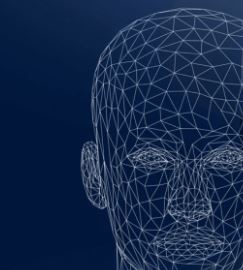We live in transformative times. Our physical and digital lives have merged. The definition of “real life” has been redefined.
No longer are virtual worlds (in the plural) separated from what we consider to be reality.
Today, we are experiencing a complete fusion of our physical and digital worlds. As firsthand witnesses of the growth in cryptocurrency, virtual meetings, digital communities, AI, gaming, and immersive artistic experiences.
To thrive during this time of digital change, we need to be prepared to operate seamlessly in both digital and physical environments.
This human need led me to examine the metaverse – a virtual-reality space in where users can interact with others in a computer-generated, immersive environment. While the metaverse will evolve over time, it’s steadily transforming how we inhabit the world around us.
I researched the metaverse with three important lenses:
First, leadership. What will it take to be an effective leader as the metaverse continues to evolve, to move from WebMe to WebWe, an environment of cohesive productivity and human connection.
Second, strategy. How will the metaverse impact strategy making and accelerate the need for agility? When physical and digital worlds are blurred, how will the metaverse impact our ability to think clearly, develop long and short-term foresight, get people moving in the same direction with purpose and hope, and shape strategies for future success?
Third, community building. How will this fusion impact our ability to build community – to relate with each other in real-life, versus a constructed, animated reality – potentially a world in which people interact through a computer for the majority of their waking hours?
The metaverse is projected to be a set of virtual spaces where you can create and explore with other people who aren’t in the same physical space as you. You’ll be able to hang out with friends, work, play, learn, shop, create, and more.[1] The metaverse isn’t a single product one company can build alone and that it won’t be built overnight, but over the next 10-15 years.
XR Today reported that in addition to two-dimensional digital spaces, users will now have an immersive reality that they can occasionally inhabit. Content creators and designers (especially 3D modelling and virtual reality world-building experts) can expect new opportunities on the road ahead. [2]
XR Today noted byproducts of the metaverse including:
- A massive new economy where wealth can be created, traded, and enhanced using a currency distinct from but related to the real world.
- The evolution of new technologies for its execution. For example, users will create a “digital me,” or digital twin, to simulate real-world presence.
- New concerns relating to data privacy, security, diversity, and ethical behavior – problems of our physical world that take on a new dimension in a virtual one.
In 2023, we’re still emerging from an intense period of isolation, coping with variations of the global COVID pandemic. During this time, incredible advances in medicine, science, technology and sustainability occurred – all with potential to improve our lives.
To learn more about how to lead and create thriving hybrid communities in the metaverse, read Leadership in the Metaverse: Creating the Future of WebWe Through Strategy and Community Building (Fast Company Press, 2023), easy-to-read and available online and at booksellers everywhere.
[1] Bosworth, Andres and Clegg, Nick, Facebook (2021). Building the Metaverse Responsibility. Meta. Source: https://about.fb.com/news/2021/09/building-the-metaverse-responsibly/; September 27, 2021.
[2] XR Today (2022). Metaverse Meaning – What is this New World Everyone’s Talking About? XR Today; https://www.xrtoday.com/mixed-reality/metaverse-meaning/; January 10, 2022.
Illustration credit: IStockPhoto




